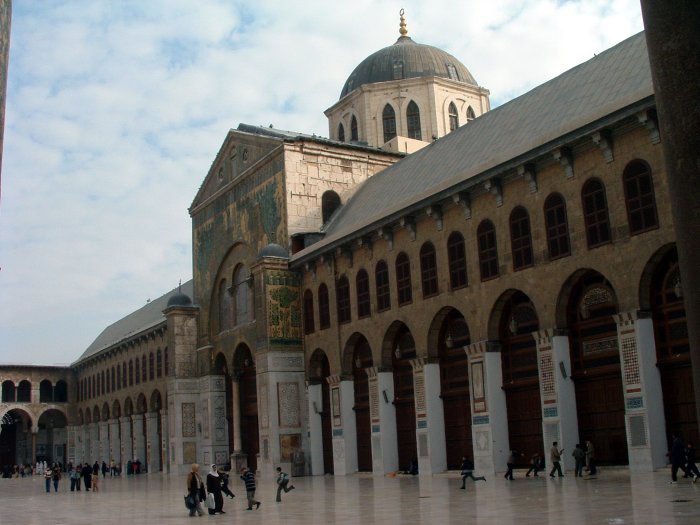According to early Muslim historians, towns that surrendered without resistance and made treaties with the Muslims gave the Muslims "permission" to take their churches and synagogues, One of the earliest examples of these kinds of conversions was in Damascus, Syria, where in 705 Umayyad caliph Abd al-Malik took the church of St. John from the Christians and had it rebuilt as a mosque, which is now known as Umayyad Mosque; overall, Abd al-Malik is said to have transformed 10 churches in Damascus into mosques. The process of turning churches into mosques was especially intensive in the villages. The Abbasid caliph al-Ma'mun turned many churches into mosques. Ottoman Turks converted into mosques nearly all churches, monasteries, and chapels in Constantinople, including the famous Hagia Sophia, immediately after capturing the city in 1453. In some instances mosques have been established on the places of Jewish or Christian sanctuaries associated with Biblical personalities who were also recognized by Islam.
earliest examples of these kinds of conversions was in Damascus, Syria, where in 705 Umayyad caliph Abd al-Malik took the church of St. John from the Christians and had it rebuilt as a mosque, which is now known as Umayyad Mosque; overall, Abd al-Malik is said to have transformed 10 churches in Damascus into mosques. The process of turning churches into mosques was especially intensive in the villages. The Abbasid caliph al-Ma'mun turned many churches into mosques. Ottoman Turks converted into mosques nearly all churches, monasteries, and chapels in Constantinople, including the famous Hagia Sophia, immediately after capturing the city in 1453. In some instances mosques have been established on the places of Jewish or Christian sanctuaries associated with Biblical personalities who were also recognized by Islam.
 earliest examples of these kinds of conversions was in Damascus, Syria, where in 705 Umayyad caliph Abd al-Malik took the church of St. John from the Christians and had it rebuilt as a mosque, which is now known as Umayyad Mosque; overall, Abd al-Malik is said to have transformed 10 churches in Damascus into mosques. The process of turning churches into mosques was especially intensive in the villages. The Abbasid caliph al-Ma'mun turned many churches into mosques. Ottoman Turks converted into mosques nearly all churches, monasteries, and chapels in Constantinople, including the famous Hagia Sophia, immediately after capturing the city in 1453. In some instances mosques have been established on the places of Jewish or Christian sanctuaries associated with Biblical personalities who were also recognized by Islam.
earliest examples of these kinds of conversions was in Damascus, Syria, where in 705 Umayyad caliph Abd al-Malik took the church of St. John from the Christians and had it rebuilt as a mosque, which is now known as Umayyad Mosque; overall, Abd al-Malik is said to have transformed 10 churches in Damascus into mosques. The process of turning churches into mosques was especially intensive in the villages. The Abbasid caliph al-Ma'mun turned many churches into mosques. Ottoman Turks converted into mosques nearly all churches, monasteries, and chapels in Constantinople, including the famous Hagia Sophia, immediately after capturing the city in 1453. In some instances mosques have been established on the places of Jewish or Christian sanctuaries associated with Biblical personalities who were also recognized by Islam.Mosques have also been converted for use by other religions, notably in southern Spain, following the conquest of the Moors in 1492. The most prominent of them is the Great Mosque of Cordoba. The Iberian Peninsula, Southeast Europe, and India (the Babri Masjid incident) are other regions in the world where such instances occurred once no longer under Muslim rule.
No comments:
Post a Comment